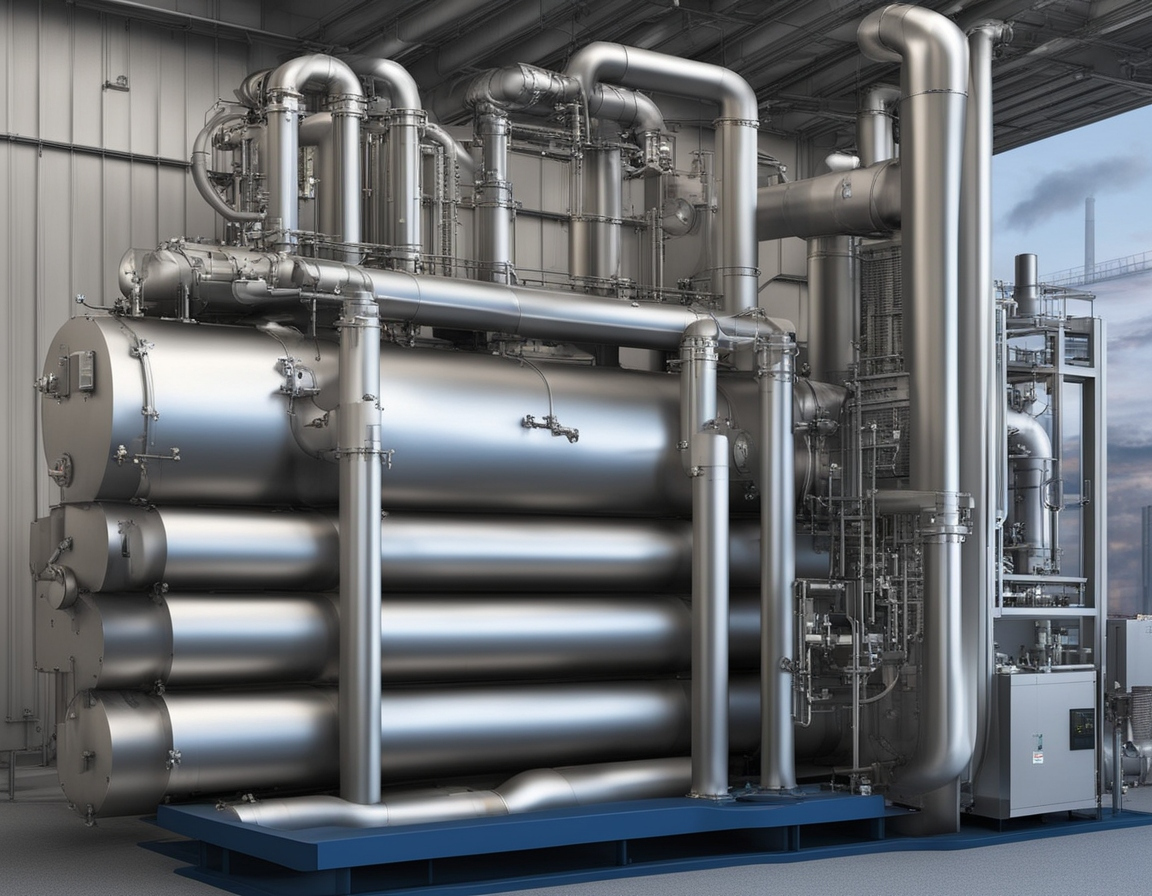
The Ultimate Guide to Vapor Absorption Machines: Advanced Insights for Engineers and Industry Professionals
Introduction:
The Vapor Absorption Machine is revolutionizing the cooling and refrigeration industry by offering a sustainable and energy-efficient alternative to traditional vapor compression systems. Unlike conventional systems that rely on mechanical energy, the Vapor Absorption Machine operates on thermal energy, making it ideal for applications where waste heat or renewable energy is available. This blog delves into the advanced mechanics, cutting-edge innovations, and real-world applications of the Vapor Absorption Machine, providing engineers and industry professionals with a comprehensive understanding of its potential.
Advanced Mechanics of the Vapor Absorption Machine:
At the core of the Vapor Absorption Machine is a thermochemical process that uses heat to drive the refrigeration cycle. The system typically employs a refrigerant-absorbent pair, such as water-lithium bromide or ammonia-water. In water-lithium bromide systems, water acts as the refrigerant, while lithium bromide serves as the absorbent. The process begins in the evaporator, where the refrigerant absorbs heat from the environment and evaporates at low pressure. The vapor is then absorbed by the lithium bromide solution in the absorber, creating a strong solution. This solution is pumped to the generator, where heat is applied to separate the refrigerant from the absorbent. The refrigerant vapor moves to the condenser, where it is liquefied, and the cycle repeats. The efficiency of a Vapor Absorption Machine is highly dependent on the temperature of the heat source, with higher temperatures improving the Coefficient of Performance (COP).
Advanced Components and Their Role in Efficiency:
Modern Vapor Absorption Machines incorporate several advanced components to enhance efficiency and performance. Plate heat exchangers, for instance, have replaced traditional shell-and-tube designs to improve heat transfer efficiency and reduce the system's footprint. Solution heat exchangers play a critical role in recovering heat from the strong solution to preheat the weak solution, thereby optimizing energy use. Additionally, variable flow pumps are now being integrated into Vapor Absorption Machines to adjust the flow rate of the absorbent solution based on cooling demand, further reducing energy consumption. These innovations not only improve the system's efficiency but also make it more adaptable to varying operational conditions.
Cutting-Edge Innovations in VAM Technology:
The field of Vapor Absorption Machine technology is rapidly evolving, with several groundbreaking innovations on the horizon. Hybrid systems that combine Vapor Absorption Machines with vapor compression units are gaining traction, as they allow for dual-mode operation. In such systems, the VAM handles the base load using waste heat, while the compression system manages peak loads, ensuring optimal performance under all conditions. Researchers are also exploring the use of ionic liquids as absorbents due to their non-volatility, high thermal stability, and tunable properties, which can significantly enhance system performance. Furthermore, the integration of Artificial Intelligence (AI) and the Internet of Things (IoT) is revolutionizing Vapor Absorption Machine operations by enabling predictive maintenance, real-time performance monitoring, and automated load management.
Real-World Applications and Case Studies:
Vapor Absorption Machines are being deployed in a wide range of applications, from industrial cooling to district cooling systems. In Dubai, a solar-powered Vapor Absorption Machine system was installed to provide air conditioning for a commercial building, reducing electricity consumption by 40% and achieving a COP of 0.7-0.8. In the cement industry, a plant in India implemented a VAM to recover waste heat from kiln exhaust gases, resulting in a cooling capacity of 5 MW and a 15% reduction in energy costs. Similarly, in Sweden, a district cooling system powered by Vapor Absorption Machines and waste heat from a power plant supplies cooling to over 10,000 households, cutting carbon emissions by 25,000 tons annually. These examples highlight the versatility and sustainability of Vapor Absorption Machines in real-world scenarios.
Challenges and Future Directions:
Despite their numerous advantages, Vapor Absorption Machines face certain challenges that need to be addressed for wider adoption. The high initial cost of VAMs is a significant barrier, although lifecycle cost analysis shows that the savings in energy and maintenance costs make them economically viable in the long term. Another limitation is their lower efficiency in low-temperature applications, but ongoing research into advanced absorbents and cascade systems is expected to overcome this hurdle. Additionally, the slow market adoption of Vapor Absorption Machines can be attributed to a lack of awareness and technical expertise. Governments and industry bodies are addressing this issue through subsidies, training programs, and awareness campaigns, paving the way for broader acceptance of this technology.
Conclusion:
The Vapor Absorption Machine represents a paradigm shift in the cooling and refrigeration industry. By leveraging advanced technologies and innovative applications, Vapor Absorption Machines are not only reducing energy consumption and carbon emissions but also paving the way for a more sustainable future. As industries and governments prioritize energy efficiency and environmental sustainability, Vapor Absorption Machines are poised to play a critical role in shaping the future of cooling.
Contact us now to join the revolution!
